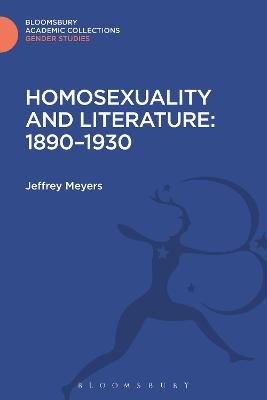Gender Studies: Bloomsbury Academic Collections
1 total work
Although artists are nowadays able to be openly gay and to address homosexuality explicitly in their work, this book argues that it was the harsh climate of 1890-1930 that produced the most outstanding explorations of homosexuality. To support his argument, Meyers illuminates the character and creative process of a range of authors of the period, including Wilde, Gide, Proust, E.M. Forster and T.E. Lawrence, and analyses the sexual problems that were sublimated and transcended in their art.
